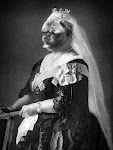“Terrain of the Heart”
Song Cycles of Mark Abel
Jamie Chamberlin, Soprano
Ariel Pisturino, Soprano
Victoria Kirsch, Piano
Delos 3438
Look around the rock music world of New
York City in the late 70's and you would likely run into a fellow
named Mark Abel. He might be leading a group he created, making a
record with another or maybe producing an album or two. Originally
from Connecticut, Abel had studied music in California before heading
back to the east coast. He returned to the Bay Area in 1983, not to
produce music but to work in news journalism, eventually becoming
Foreign Editor of the respected San Francisco Chronicle. Musically,
during his two decades in journalism, Abel moved away from rock and
pop and began to explore classical forms and concepts becoming
especially focused on solo vocal music. Thus Abel melds his
experience in classical, rock and song writing music into songs that
are sophisticated, accessible, original and tuneful.
An accomplished writer, Abel often
writes his own texts for his songs. “Terrain of the Heart”
showcases three of Abel's song cycles, two of which are settings of
his own text. “The Dark Eyed Chameleon” and “Rainbow Songs”
use his own poetry. “Five Poems of Rainer Maria Rilke” obviously
set poems by the Bohemian novelist-poet.
Musically, nothing in these three
cycles would be out of place in a contemporary musical. Frequently
tonally ambiguous, and contemporary in sound, they are nonetheless
well crafted, emotionally complex and engaging lyric songs in the
truest sense of the form.
At nearly a half hour, “ The Dark
Eyed Chameleon” (2007) is the most substantial and most emotionally
affecting of the three song cycles. The nearly half hour cycle tells
the tale of the composer's painful break up of a long term
relationship. Hints of past tragedy and loss, misunderstandings,
longing, realizing the inevitable (“underneath us the ground is
always shifting, unstable like our California”) and the final break
(The fatal blow is struck by telephone..) permeate the lyrics to the
five songs. Very theatrical in nature, “Chameleon” could be
envisioned as a one actor play, but Abel's accompanying music,
alternatively wistful, agonized and even confused, propels the story
forward as much as the lyrics. Soprano Jamie Chamberlin, along with
pianist Victoria Kirsch totally understand and are committed to the
work. Chamberlin negotiates the many chromatic leaps and rapid
changes of emotion and texture. Kirsch is a sensitive yet propulsive
accompanist and a full partner in telling the story.
For the “Five Poems of Rainer Maria
Rilke” (2004) Ariel Pisturino, soprano, takes over the vocal
duties. Pisturino is gifted with a big, but clear and slightly bright
voice that perfectly suits the darkly expressive poetry. Her's is a
voice tailor made for art song. Of the three cycles, “Five Poems”
is the most “classical” influenced, more adventurous and flexible
in tempi and dynamics, befitting the more hauntingly symbolic nature
of the lyrics. “In this town the last house stands” is shaded and
ultimately enigmatic, the vocal lines lyrical but unsettled at the
same time. The longest of the five songs, “All of you undisturbed
cities” is punctuated with relentless ostinati over which Pisturino
weaves the jagged melodic line, laced with impending doom. In the
remaining songs,“My life is not this steeply sloping hour”,“You
darkness, that I come from” and “I live my life in growing
orbits”, Abel's stark and expressionistic music works in tandem
with the often mysterious poetry to deliver a most satisfying yet
challenging musical experience. “Five Poems” is certainly a fine
addition to the song repertoire and worth repeated hearings in
recordings and in recitals or concerts.
Chamberlin returns with her lighter
voice (should I say less “operatic” and more “Broadway” voice
and start that whole argument??) in the final four “Rainbow Songs”.
More light hearted and fanciful than the other cycles, “Rainbow”
could be dismissed as fluff and nothing new but for the colorful and
atmospheric “La Sonnambula”, depicting a woman wandering through
desolate streets looking for her lover, but doomed to never find him.
“La Sonnambula” is a touch more sophisticated than many of the
other songs, growing in drama, dynamics and lyrical intensity from a
shadowy figure in the piano. To my ears, it is the single most
effective song on the disc.
Abel's music in each of the cycles is
highly chromatic and linear, the linearity and incessant forward
motion showing the formidable influences of the composer's rock music
roots. While appropriate to the lyrics, which, with the exception of
the Rilke songs, are also rock influenced and linear in nature, the
chromatic and declamatory sound world can lead to a numbing sameness
if one listens to the whole 73 minute CD in one sitting. Probably
best to get into this music by listening to one cycle at a time.
Delos' notes and bios are of their
usual high standard as is the stellar sound engineering. There is
frequently a lot going on in the songs, lyrically and musically, so
the close and somewhat dry sound works well to keep everything clear.
Mark Abel's website (www.markabelmusic.com) has perusal scores for
all the songs for those wanting to follow along.
Perhaps this music is more influenced
by Sondheim than Schubert, but that was not the composer's intention.
Put all that aside, and listen to some fine, easily approachable and
frequently satisfying songs.


